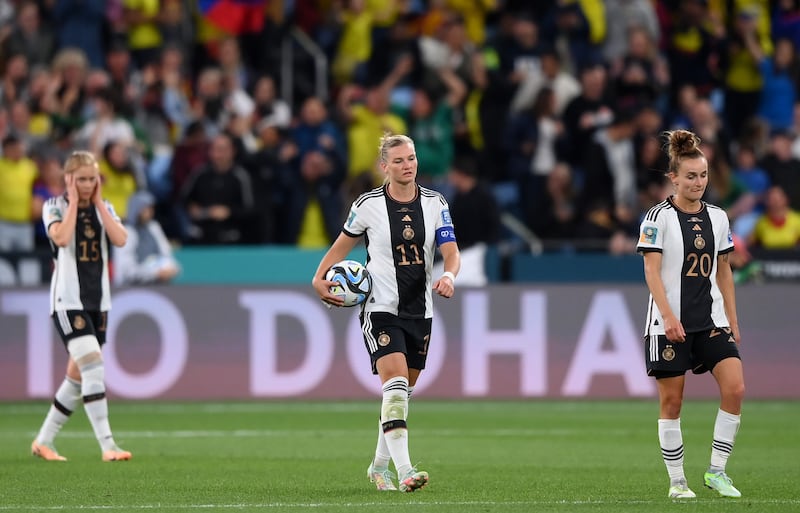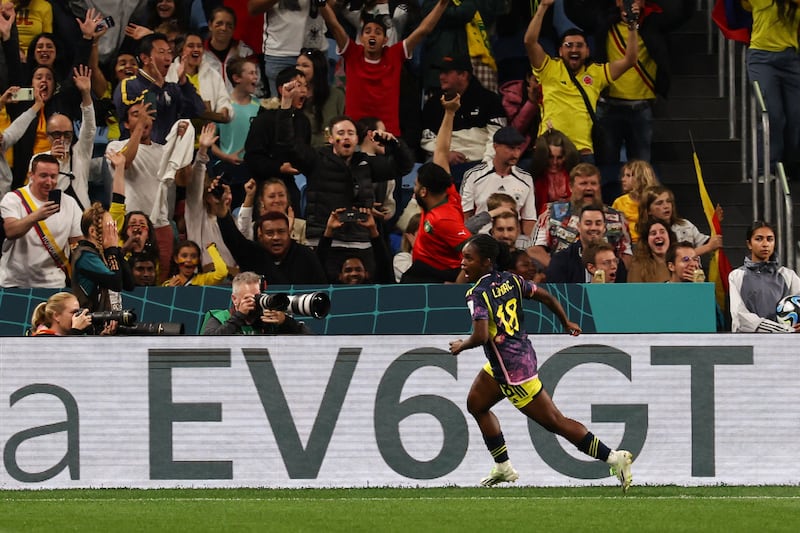The Irish players’ thoughts, needless to say, have been focused solely on World Cup matters this summer, but six of them have been in the unenviable position of having “unattached” beside their names during the tournament.
Five of that group were released by their clubs at the end of last season – Megan Connolly (Brighton), Ruesha Littlejohn (Aston Villa), Lily Agg (London City Lionesses) and goalkeepers Grace Moloney (Reading) and Megan Walsh (Brighton) – while Heather Payne is on the hunt for a club too after completing her scholarship at Florida State University.
Amber Barrett and Claire O’Riordan have their futures sorted, though, the pair both signing for Standard Liège in the Belgian top flight after leaving Turbine Potsdam and Celtic, respectively.
And another six of the squad were rewarded with new contracts by their clubs in the last month or so: the two Quinns, Louise and Lucy (both Birmingham City), Niamh Fahey (Liverpool), Courtney Brosnan (Everton), Ciara Grant (Hearts) and Chloe Mustaki, who will be playing in the WSL next season after Bristol City’s promotion.
Double-fronted four-bed on Sandycove Road for €1.395m
MobLand review: Pierce Brosnan’s Irish accent is a horror for the ages. Forget licence to kill, this is more Darby O’Gill
Donald Trump’s tariffs: The distinct dangers for Ireland, pharma in the spotlight and what else to expect
Monaghan put their faith in Rory Beggan’s boot but Kerry know goals win games
But at least eight of the 23-strong World Cup squad will be playing with new clubs in the new campaign, six of them still looking for new employers. All change.
Word of Mouth
“I’d be playing her, mate. Because they’ve got to win. They’ve got to roll her out, strap her up, whatever they need to do – because she can play. Sh*t, she can play.” – Even if Sam Kerr was on crutches, Australian (rugby) coach Eddie Jones would quite like to see Sam Kerr on the pitch against Canada.
By the Numbers: 20
That’s how many group games Germany played without losing, dating back to 1995... until they met Colombia on Sunday.

Carving out funding for NZ
New Zealand made a piece of decidedly unwanted history on Sunday when they became the first World Cup host nation to fail to make it in to the knock-out stages of the tournament. The conversation now is about what kind of impact their efforts will have on the future of the women’s game in the country, funding central to the chat.
Before the tournament, Hamilton was among the host cities given $500,000 in public money that was to go towards encouraging girls to take up the game.
[ Women’s World Cup round-up: Coach Klimkova proud of New Zealand despite exitOpens in new window ]
Where did the largest – by a long distance – chunk of the money go? On a football sculpture in the city. Which cost $170,000. “I can’t see a sculpture having a significant impact on the empowerment of females in the region,” sighed former international Katie Duncan.
To top it all, according to the Stuff news website, the sculpture’s unveiling clashed with New Zealand’s final World Cup warm-up game earlier this month, so those attending the ceremony missed it. Oh Lord.
***

Colombia’s starwoman lands
She’s only 18, but there’s probably already a movie in the life of Colombia’s Linda Caicedo. An international debut at 14, diagnosed with ovarian cancer at 15, at the centre of a transfer tug-of-war between Barcelona and Real Madrid, Madrid winning out back in February. And she’s played in three World Cups in the space of a year – the Under-20, Under-17 and senior tournaments.
And then two goals in her first two senior World Cup games, the second a pure peach against South Korea on Sunday. How much do they love her in Colombia? “She’s one of these people who was touched by God, who was born for this,” said her first coach Diego Vásquez. “She’s from another planet, entirely unique,” said Colombia’s assistant coach Angelo Marsiglia. A lot.
Third person singular
Most impressive third-person-speak in the World Cup so far: We’ll go with Lindsey Horan’s take on her equaliser against the Netherlands, Jill Roord’s goal for the Dutch seeing the United States trail in a World Cup game for the first time since, crikey, 2011.
Horan was left peeved by a lively tackle from Danielle van de Donk – awkwardly, her Olympique Lyon team-mate – before she levelled the game with a header. “That’s when you get the best football from Lindsey,” said, eh, Lindsey. “I don’t think you ever want to get me mad because I don’t react in a good way.”















